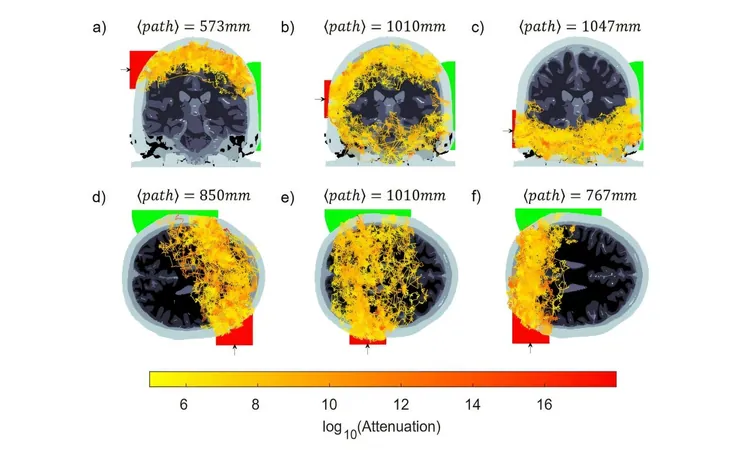
Revolutionary Discovery: Light Captured Traveling Through the Entire Human Head for Advanced Brain Imaging!
2025-06-13
Author: Daniel
Imagine a world where scientists can peek deep into the brain without invasive procedures. For years, near-infrared light has been a powerful tool in non-invasive brain studies, but traditional methods, such as functional near-infrared spectroscopy (fNIRS), have serious limitations. While fNIRS is handy and cost-effective, it typically only penetrates 4 centimeters into the brain, missing out on deeper regions vital for memory, emotions, and movement.
Now, a groundbreaking study from researchers at the University of Glasgow has shattered previous assumptions by successfully detecting light that traverses the entire adult human head! This pioneering research, published in the journal Neurophotonics, showcases that, equipped with the right technology, we can measure photons traveling from one side of the head to the other, even across its widest area.
The team achieved this feat using cutting-edge lasers and sensitive detectors under meticulous conditions. By firing a pulsed laser beam into a volunteer's head and placing a detector on the opposite side, they blocked out extraneous light to capture the elusive photons making this remarkable journey through the skull and brain.
To ensure accuracy, the researchers also conducted intricate computer simulations to map the light's behavior through the head's diverse layers. Astonishingly, the simulations aligned perfectly with their experimental findings, confirming the photons indeed traveled through the entire skull!
These simulations provided intriguing insights, revealing that light tends to navigate specific pathways within the brain, typically guided by areas with less scattering, like cerebrospinal fluid.
Although this innovative technique is not yet suitable for everyday application—it currently demands 30 minutes of data collection and only works on individuals with light skin and no hair—this major leap in detecting light across the head opens exciting avenues for the future of brain imaging. It may inspire a new generation of fNIRS devices capable of delving into deeper brain areas than ever before.
With further advancements, this approach could transform brain imaging, making it more accessible and affordable for clinical and home use. Imagine improved capabilities in diagnosing and monitoring conditions like strokes, brain injuries, or tumors, especially in locations where MRI or CT scans are out of reach. The future of brain health may just be illuminated!




 Brasil (PT)
Brasil (PT)
 Canada (EN)
Canada (EN)
 Chile (ES)
Chile (ES)
 Česko (CS)
Česko (CS)
 대한민국 (KO)
대한민국 (KO)
 España (ES)
España (ES)
 France (FR)
France (FR)
 Hong Kong (EN)
Hong Kong (EN)
 Italia (IT)
Italia (IT)
 日本 (JA)
日本 (JA)
 Magyarország (HU)
Magyarország (HU)
 Norge (NO)
Norge (NO)
 Polska (PL)
Polska (PL)
 Schweiz (DE)
Schweiz (DE)
 Singapore (EN)
Singapore (EN)
 Sverige (SV)
Sverige (SV)
 Suomi (FI)
Suomi (FI)
 Türkiye (TR)
Türkiye (TR)
 الإمارات العربية المتحدة (AR)
الإمارات العربية المتحدة (AR)